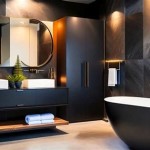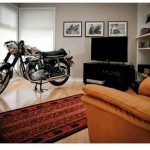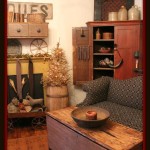Theater Room Decor: Creating the Ultimate Cinematic Experience at Home
The allure of a dedicated theater room lies in its ability to replicate, and even surpass, the traditional cinema experience. Transforming a spare room, basement, or even a corner of a living area into a private cinematic sanctuary involves careful consideration of several design elements. Decor plays a pivotal role in establishing the atmosphere, enhancing the audio-visual experience, and ultimately, creating a space where movie magic comes to life.
The first step in designing a theater room is establishing a theme. While some may opt for a classic Hollywood aesthetic, others might prefer a modern minimalist approach, or even a theme based on a specific film genre. This thematic choice will inform subsequent decisions regarding color palettes, furniture, and decorative accents.
Wall color significantly impacts the viewing experience. Darker colors, such as deep blues, grays, or even black, are generally preferred as they absorb light, minimizing reflections on the screen and enhancing the perceived contrast of the projected image. These deeper hues also contribute to a more immersive, theater-like ambiance.
Acoustic treatment is crucial for optimal sound quality. While specialized acoustic panels are ideal, strategically placed thick curtains, rugs, and upholstered furniture can also help absorb sound reflections and minimize echoes. This not only improves sound clarity but also contributes to the overall aesthetic of the room.
Lighting is a key element in setting the mood. Dimmable recessed lighting provides ambient illumination, while strategically placed sconces or wall lights can add a touch of elegance. Consider incorporating accent lighting behind the screen or along the perimeter of the room to create a dramatic effect. Smart lighting systems offer advanced control over lighting levels and color temperature, further enhancing the viewing experience.
Seating is a paramount consideration in a theater room. Comfortable and appropriately sized seating arrangements are essential for extended viewing sessions. Options range from plush recliners with built-in cup holders and trays to tiered rows of cinema-style seating. The choice of seating material and color should complement the overall design scheme.
The screen is the focal point of the theater room. The size of the screen should be proportional to the room's dimensions and the viewing distance. Projector screens offer various aspect ratios and materials, catering to different viewing preferences and projection technologies. Alternatively, large flat-screen televisions can also be a viable option, particularly in smaller spaces.
Decorative accents can further enhance the theater room's ambiance. Movie posters, framed stills, and vintage film equipment can add a touch of nostalgia and personalize the space. Consider displaying awards, memorabilia, or other items related to film or specific genres to create a unique and engaging environment.
Cable management is often overlooked but is essential for maintaining a clean and organized appearance. Concealing cables behind walls or within dedicated conduits eliminates visual clutter and enhances the overall aesthetic. Wireless solutions for audio and video equipment can further streamline the setup.
The placement of speakers plays a critical role in achieving optimal sound quality. A surround sound system, ideally calibrated to the room's acoustics, delivers an immersive audio experience. The placement of subwoofers, center speakers, and surround speakers should be carefully considered to create a balanced and dynamic soundstage.
Consider incorporating a concession stand or bar area for added convenience and entertainment value. A mini-fridge, popcorn machine, and snack storage can elevate the movie-watching experience to a new level. This dedicated area also provides a designated space for preparing refreshments, minimizing disruptions during screenings.
Ventilation is an important factor, especially in enclosed spaces. Proper ventilation prevents the room from becoming stuffy and uncomfortable during extended viewing sessions. Consider installing an exhaust fan or ensuring adequate airflow through existing vents to maintain a comfortable environment.
Temperature control is crucial for creating a pleasant viewing experience. Maintaining a comfortable room temperature allows viewers to fully immerse themselves in the film without distractions. A dedicated thermostat or climate control system can ensure optimal temperature regulation.
Accessibility is an important consideration when designing any space. Ensuring easy access for individuals with mobility impairments enhances inclusivity and allows everyone to enjoy the theater room. This might involve wider doorways, ramps, or designated seating areas.
Finally, personal touches are what truly transform a theater room into a unique and inviting space. Incorporating elements that reflect individual preferences and interests adds character and creates a sense of ownership. This could involve displaying favorite movie memorabilia, incorporating unique lighting fixtures, or adding custom-designed furniture.

34 Diy Media Room Decor Ideas Family Makeover

6 Stunning Ideas For Your Home Theatre Room Decor

16 Home Theater Ideas Renovation Tips And Decor Examples

18 Home Theater Ideas Blissful Nest Stunning Rooms

46 Minimalist Living Room Decor Ideas With Perfect Lighting Theater

Family Night Sign Personalized Home Theater Wall Art Norway

Theater Decorating Home Decor Room

Home Theater Ideas How To Design The Perfect Room For Night

Stay Entertained 20 Lovely Small Home Theaters And Media Rooms Decoist

Superb Basement Home Theater Concepts To Z Room Decor Media Design
Related Posts







